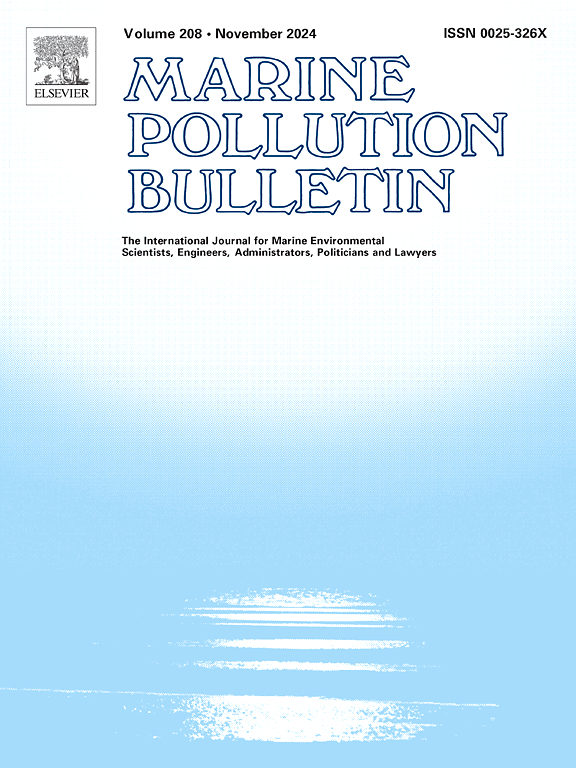Carbon dioxide removal (CDR) potential in temperate macroalgal forests: A comparative study of chemical and biological net ecosystem production (NEP)
IF 5.3
3区 环境科学与生态学
Q1 ENVIRONMENTAL SCIENCES
引用次数: 0
Abstract
The carbon dioxide removal (CDR) capacity of macroalgae, a crucial component in climate regulation, has gained increasing attention. However, accurately estimating the CDR potential of macroalgae in natural conditions remains challenging, necessitating the use of multiple independent methods to reduce the uncertainties in these estimates. In this study, we compared two methods for estimating net ecosystem production (NEP), a key parameter in determining CDR potential: 1) NEPChem., derived from seawater carbonate chemistry and 2) NEPBiol., based on photorespiratory measurements using benthic tent incubation. This study, conducted in a macroalgal forest dominated by Ecklonia cava, involved simultaneous measurements of NEPChem. and NEPBiol. over a course of one year. Our findings revealed that NEPBiol. was 1.23 times higher than NEPChem., with an annual rate of 3.69 tons CO2 ha−1 yr−1. These results suggest that both independent methods are reliable and can be used complementarily to improve the accuracy of NEP measurements, thereby enhancing estimates of the CDR potential of macroalgae.
温带大型藻类森林的二氧化碳清除(CDR)潜力:化学和生物净生态系统生产(NEP)比较研究
大型藻类的二氧化碳去除(CDR)能力是气候调节的一个重要组成部分,已越来越受到人们的关注。然而,准确估算大型藻类在自然条件下的二氧化碳去除潜力仍然具有挑战性,因此有必要使用多种独立方法来减少这些估算的不确定性。在这项研究中,我们比较了两种估算生态系统净生产量(NEP)的方法,这是确定 CDR 潜力的一个关键参数:1)NEPChem.这项研究在以 Ecklonia cava 为主的大型藻类林中进行,在一年的时间里同时测量了 NEPChem 和 NEPBiol。我们的研究结果表明,NEPBiol.是 NEPChem.的 1.23 倍,年排放率为 3.69 吨 CO2 ha-1 yr-1。这些结果表明,这两种独立的方法都是可靠的,可以互补使用,以提高 NEP 测量的准确性,从而增强对大型藻类 CDR 潜力的估计。
本文章由计算机程序翻译,如有差异,请以英文原文为准。
求助全文
约1分钟内获得全文
求助全文
来源期刊

Marine pollution bulletin
环境科学-海洋与淡水生物学
CiteScore
10.20
自引率
15.50%
发文量
1077
审稿时长
68 days
期刊介绍:
Marine Pollution Bulletin is concerned with the rational use of maritime and marine resources in estuaries, the seas and oceans, as well as with documenting marine pollution and introducing new forms of measurement and analysis. A wide range of topics are discussed as news, comment, reviews and research reports, not only on effluent disposal and pollution control, but also on the management, economic aspects and protection of the marine environment in general.
 求助内容:
求助内容: 应助结果提醒方式:
应助结果提醒方式:


